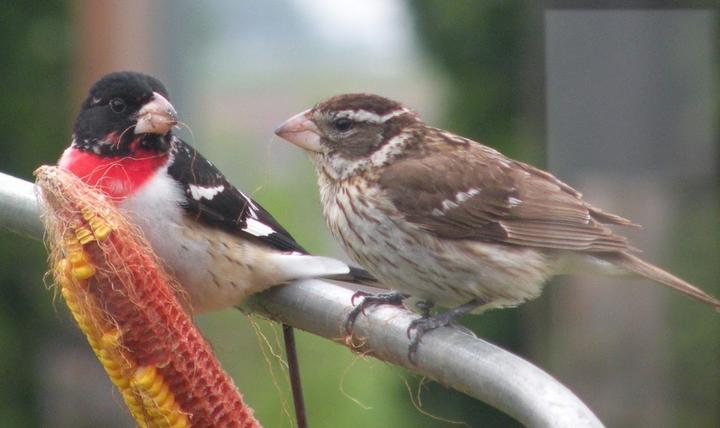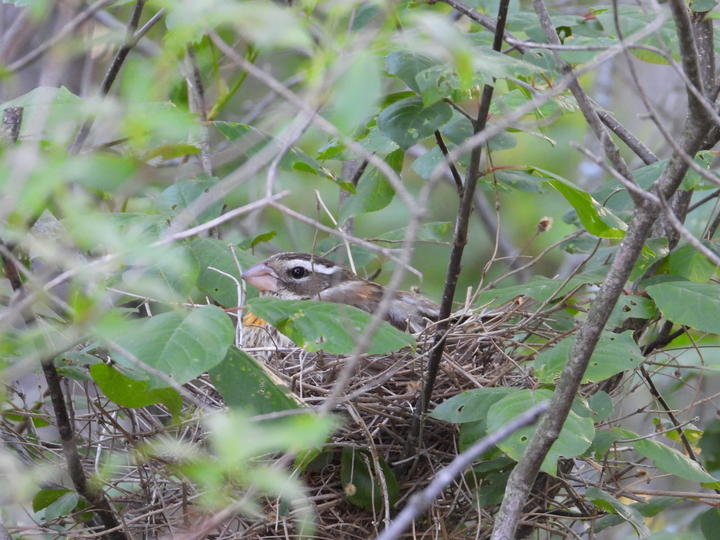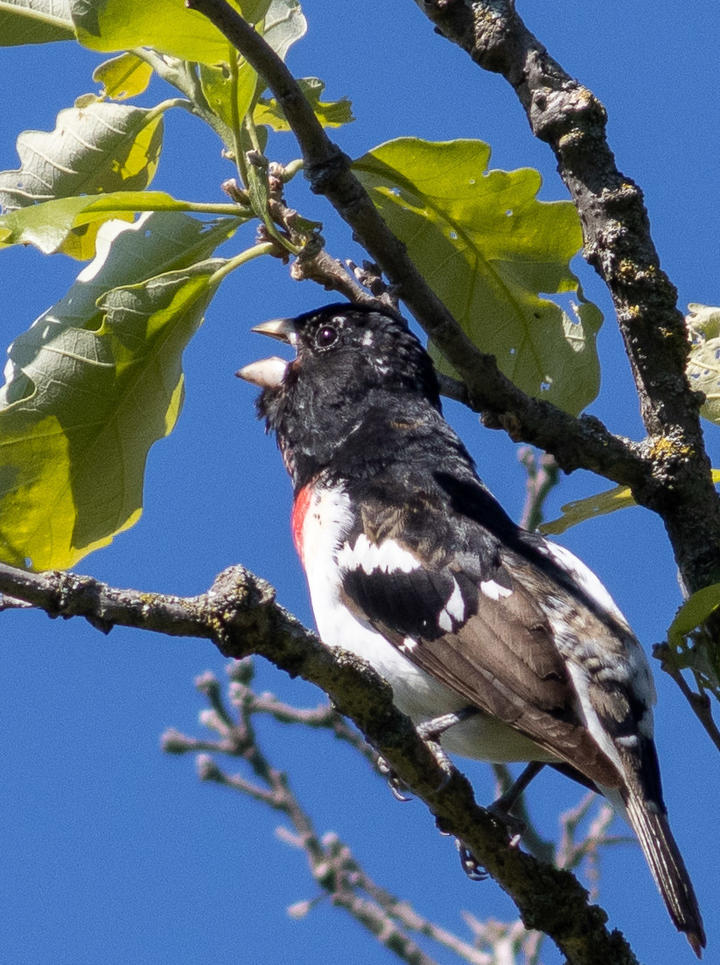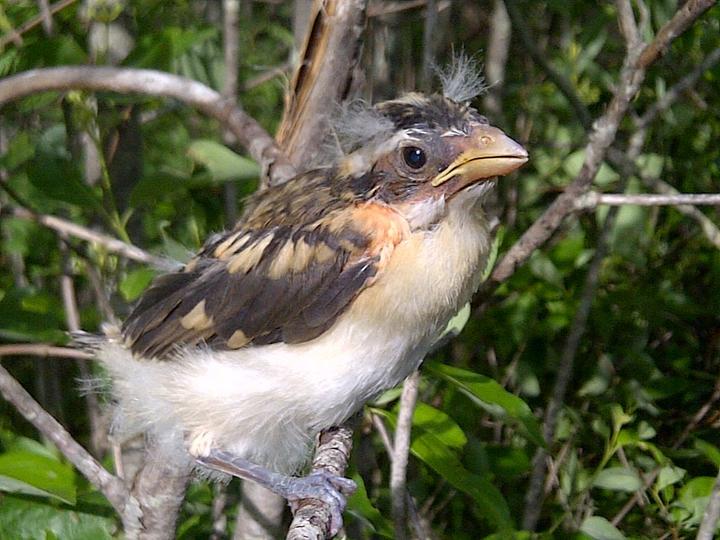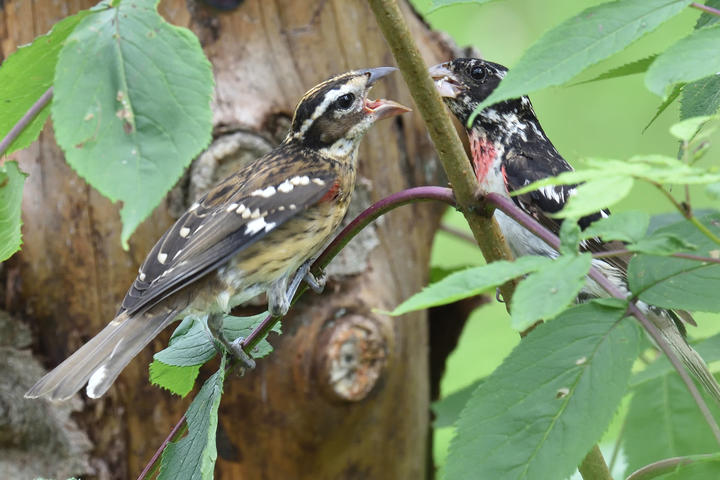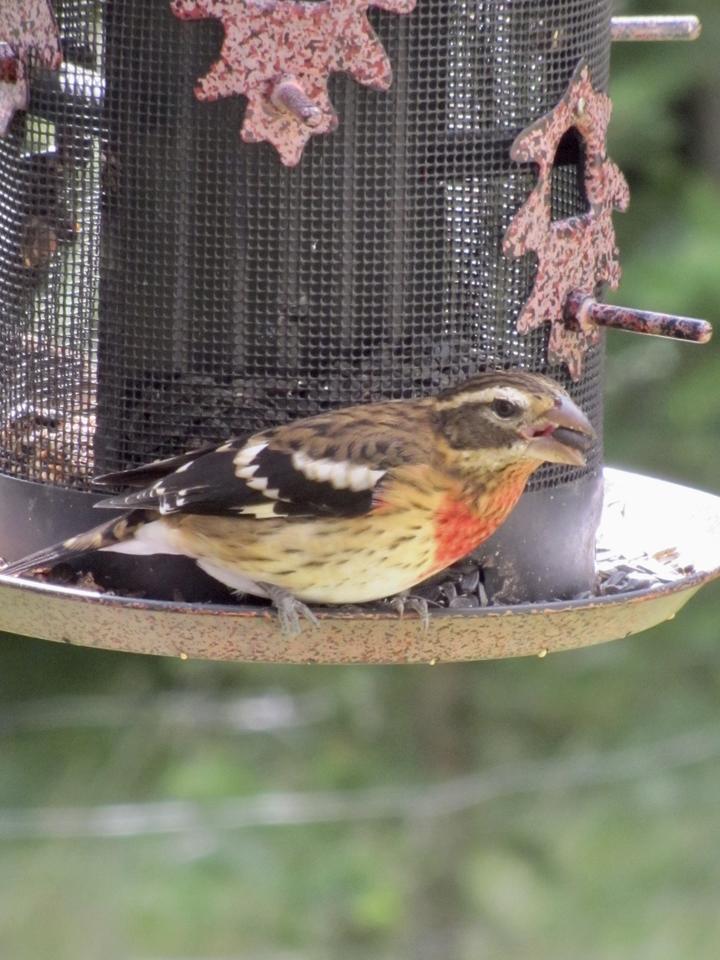More names for this bird
The Dakota and Anishinaabe were among the earliest people to name Minnesota’s plants and animals, as well as to understand them in relation to Minnesota’s climate and seasons. Those original names are still in use, and several are included on the Season Watch website. However, complete translations were not available.
Latin (or scientific name): Pheucticus ludovicianus
The scientific community has a convention of assigning agreed-upon Latin names to every kind of organism. Using scientific names helps people communicate confidently about the same organism and organize lifeforms based on how closely related they are.
Page contents
About the rose-breasted grosbeak
Rose-breasted grosbeak eating at a feeder.
Video by Ryan T via YouTube
About the rose-breasted grosbeak
- The rose-breasted grosbeak is a medium-sized, stocky songbird with a square tail. Its large triangular bill is great for cracking seed shells.
- Both males and females sing a song similar to the American robin, but considered more melodious.
- Roughly half of their diet consists of insects, and the remainder includes berries, seeds (including sunflower and safflower), tree flowers and tree buds.
- Rose-breasted grosbeaks migrate. Expand the "Migration animation" section below to learn more.
Migration animation
Migration animation
Click the full-frame icon (lower right corner of video) to play at full size.
More about eBird's abundance animations
eBird data from 2006-2020. Estimated for 2020. Fink, D., T. Auer, A. Johnston, M. Strimas-Mackey, O. Robinson, S. Ligocki, W. Hochachka, L. Jaromczyk, C. Wood, I. Davies, M. Iliff, L. Seitz. 2021. eBird Status and Trends, Data Version: 2020; Released: 2021. Cornell Lab of Ornithology, Ithaca, New York. https://doi.org/10.2173/ebirdst.2020
Visual guide to phenology
Watch for changes in rose-breasted grosbeaks' presence (or absence), abundance, and behaviors at different times of year. Also, pay attention to seasonal plumages and when young-of-year appear and develop.
Note to observers
This page explains general clues to watch and listen for when observing rose-breasted grosbeak phenology. However, this page does not explain how to identify this bird or collect data in a standardized way.
- For help with identification, see The Cornell Lab's All About Birds.
- For guidance on collecting data, see Nature’s Notebook.
Audio resources
Visit All About Birds for recordings of songs and calls by rose-breasted grosbeaks.
Graphs and historical data
Note: The Orientation Center provides a map, as well as information on reading graphs; interpreting summary statistics, who collected the data and how; and how to download datasets for independent exploration.
Arrival
- Earliest: May 1 (occurred in 2012)
- Average: May 11
- Latest: May 18 (occurred in 1996)
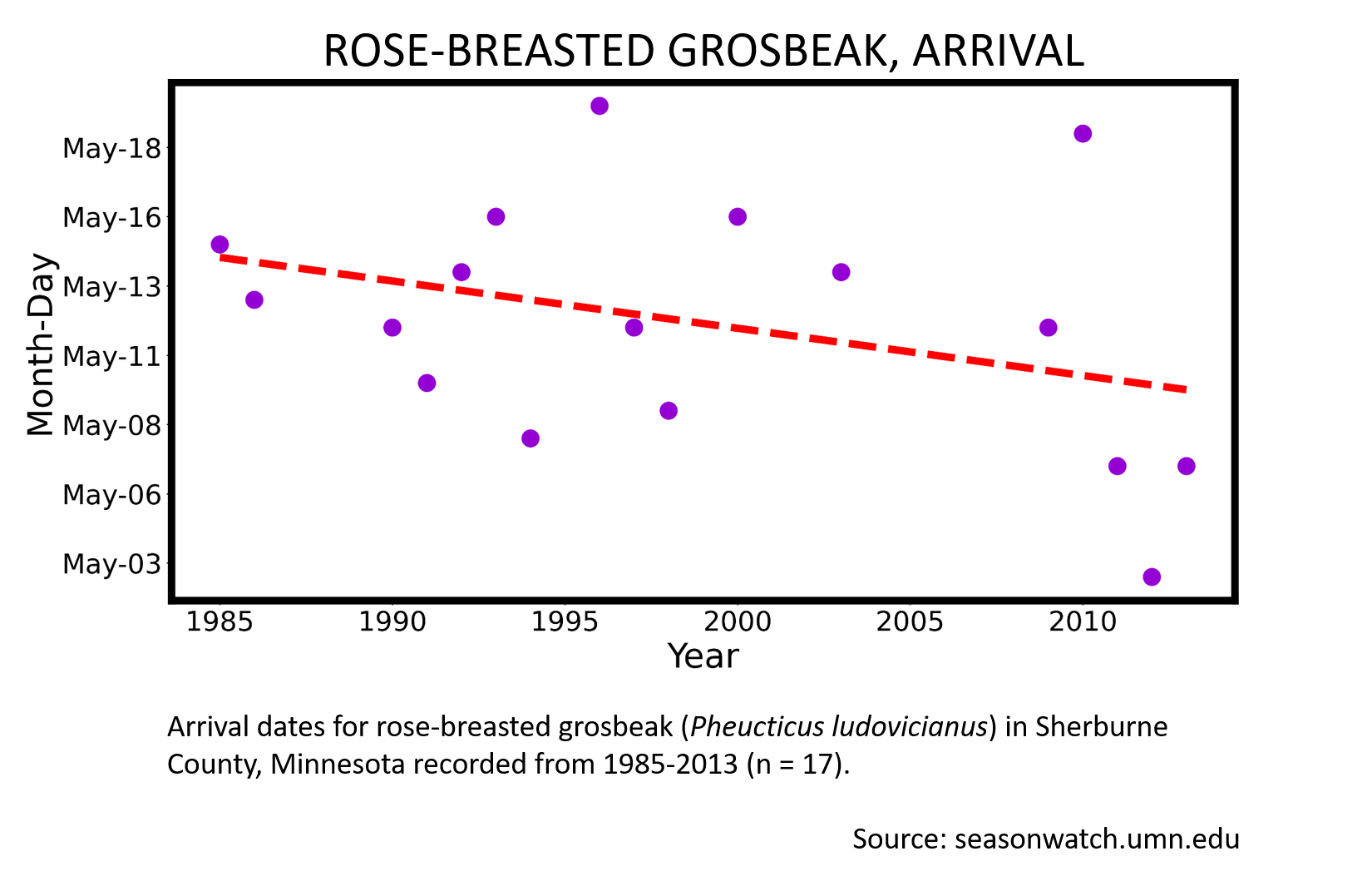
Keep exploring Season Watch
Keep exploring Season Watch
Co-author: Jayme Hogan, Minnesota Master Naturalist
